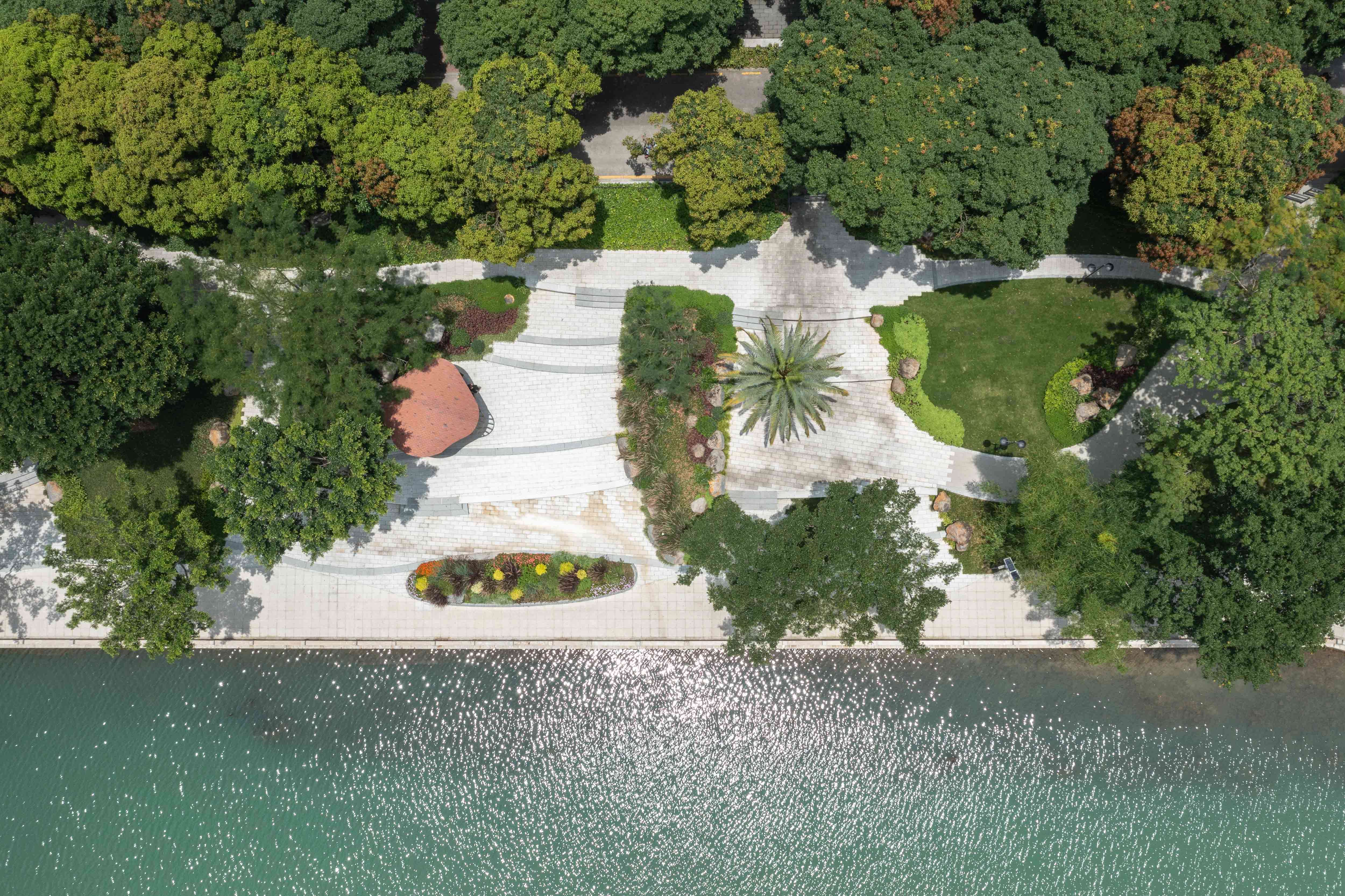


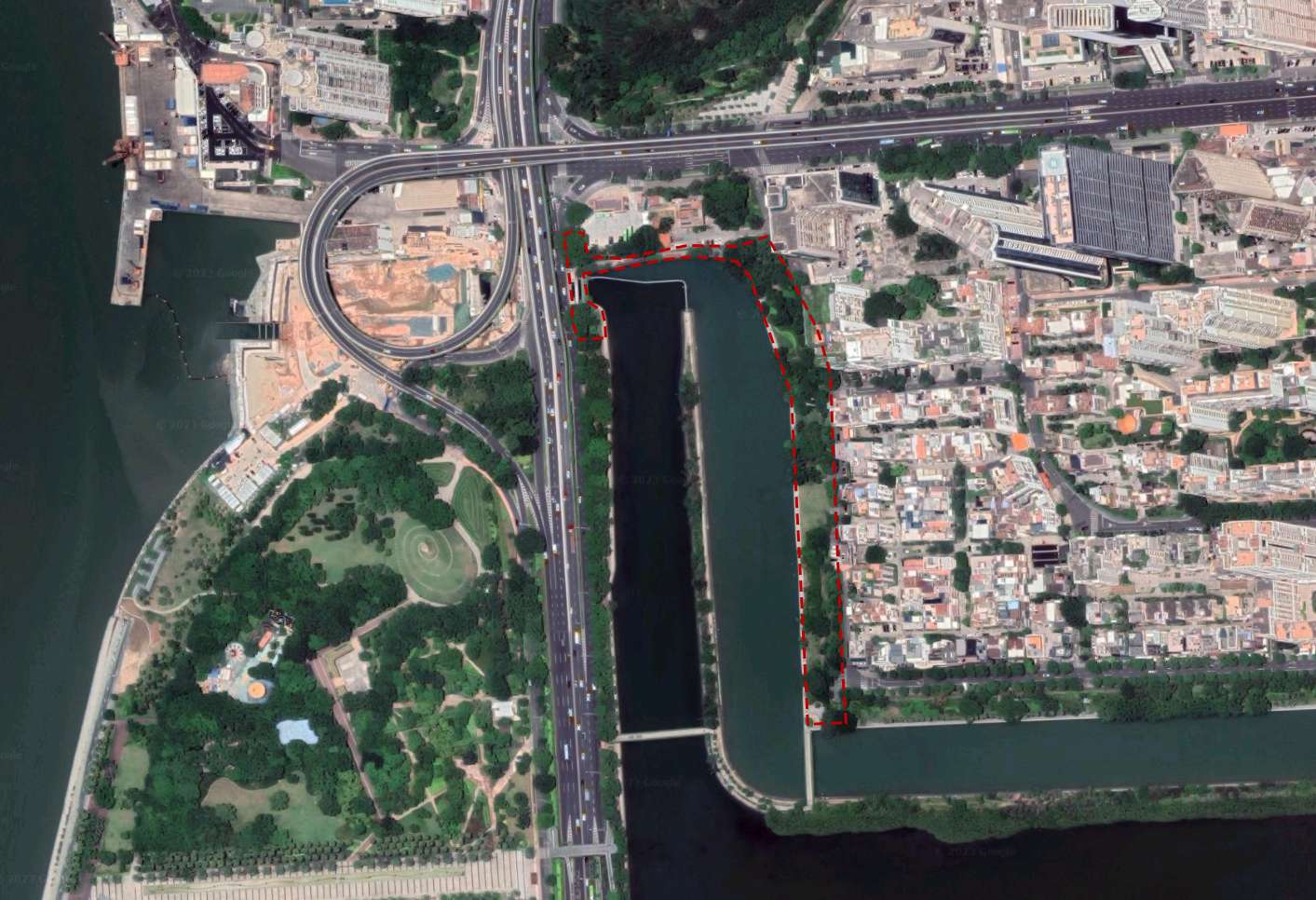
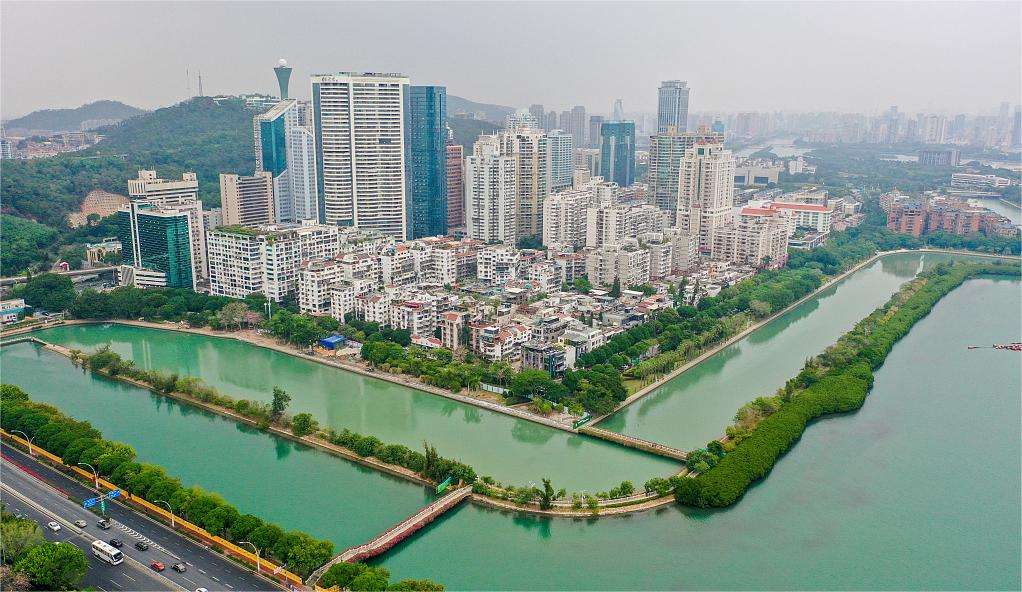
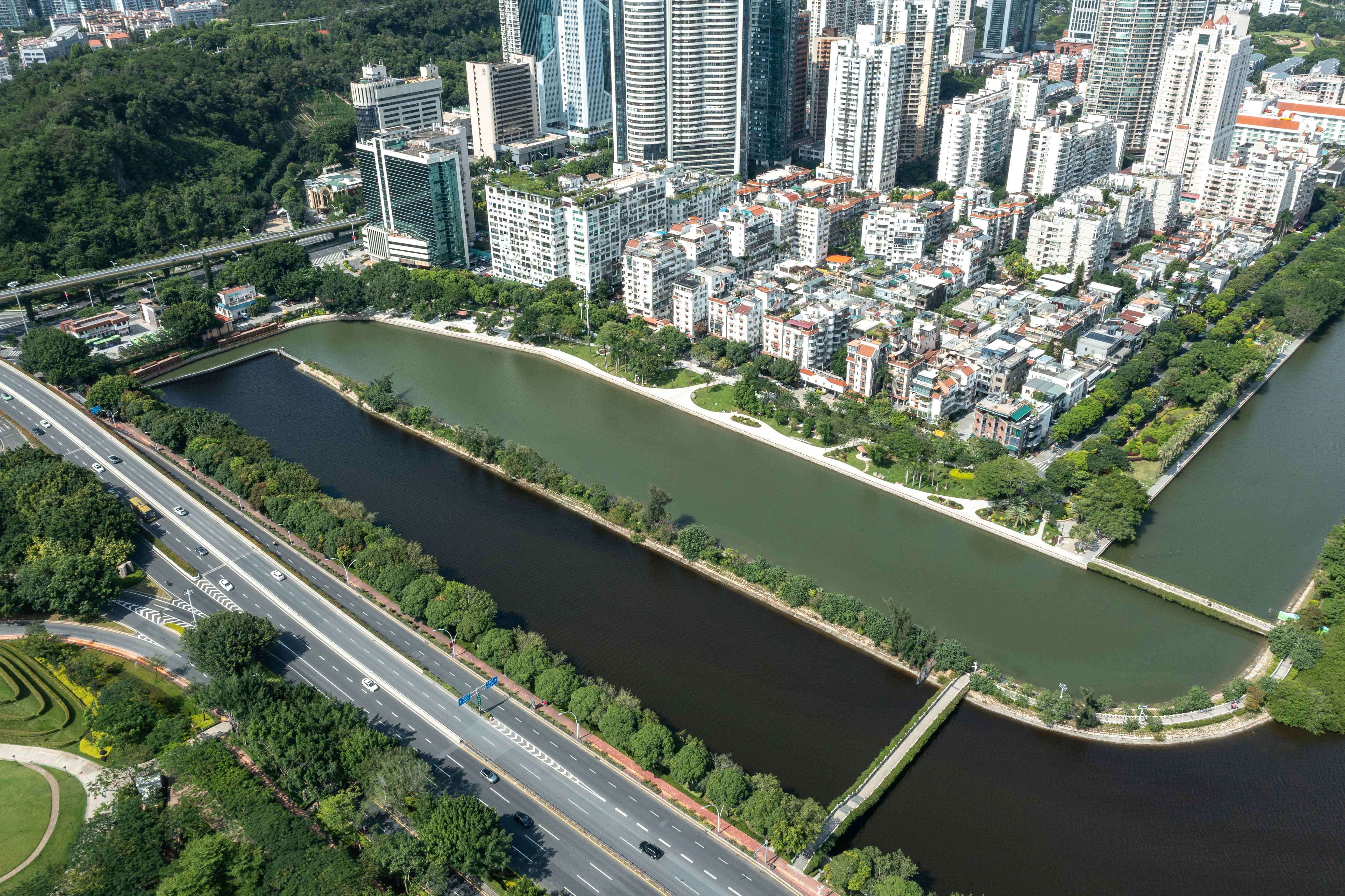
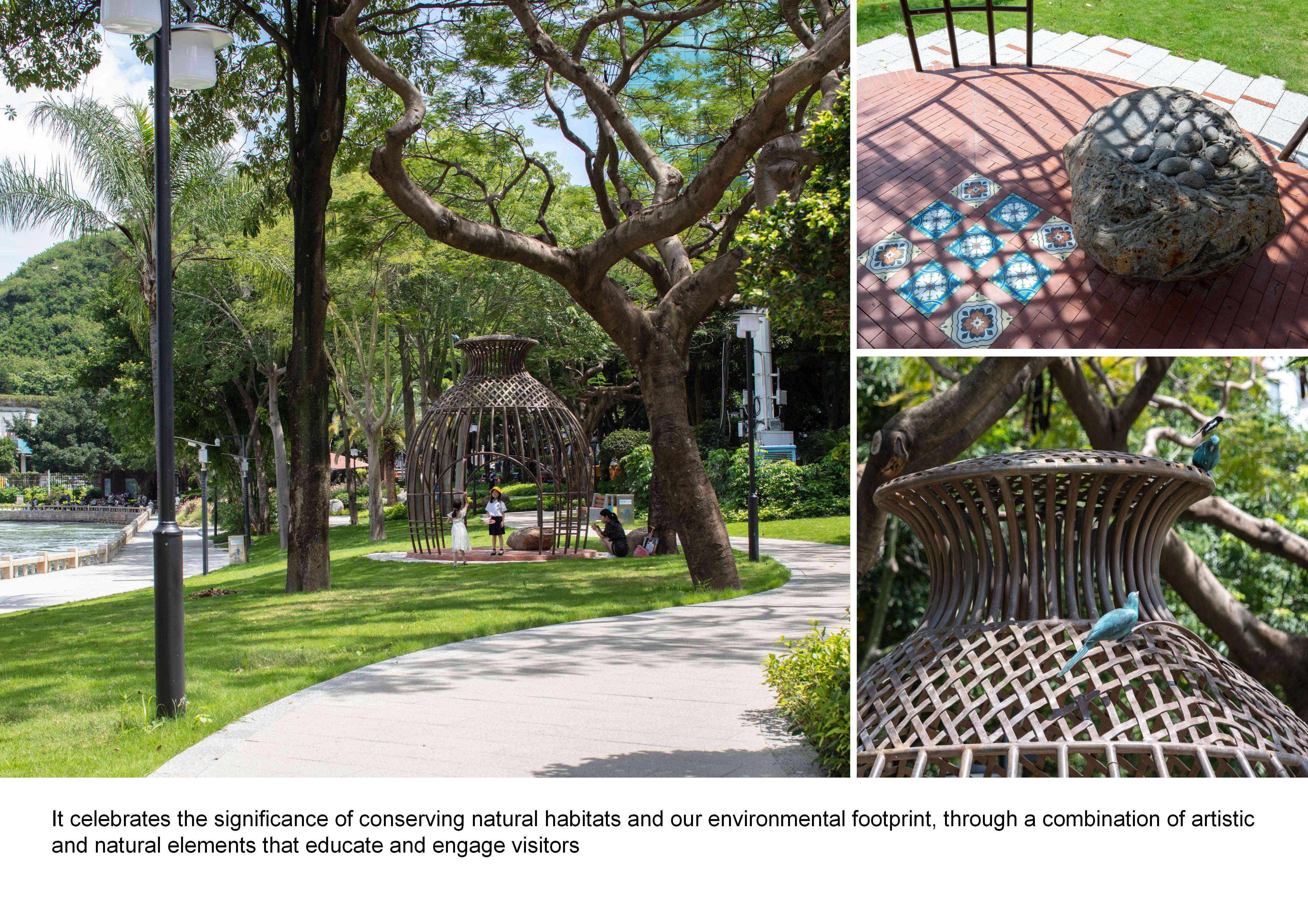
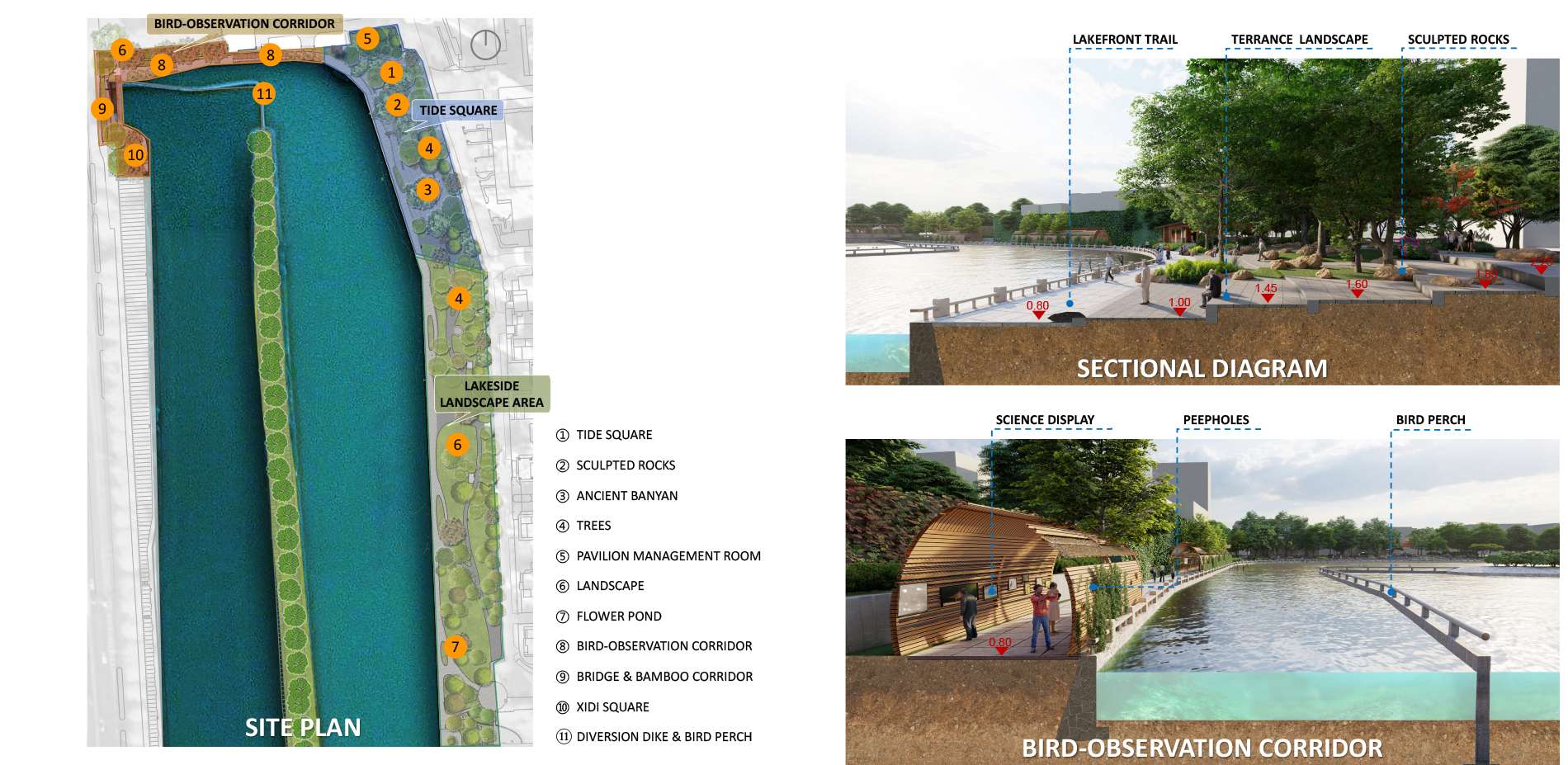

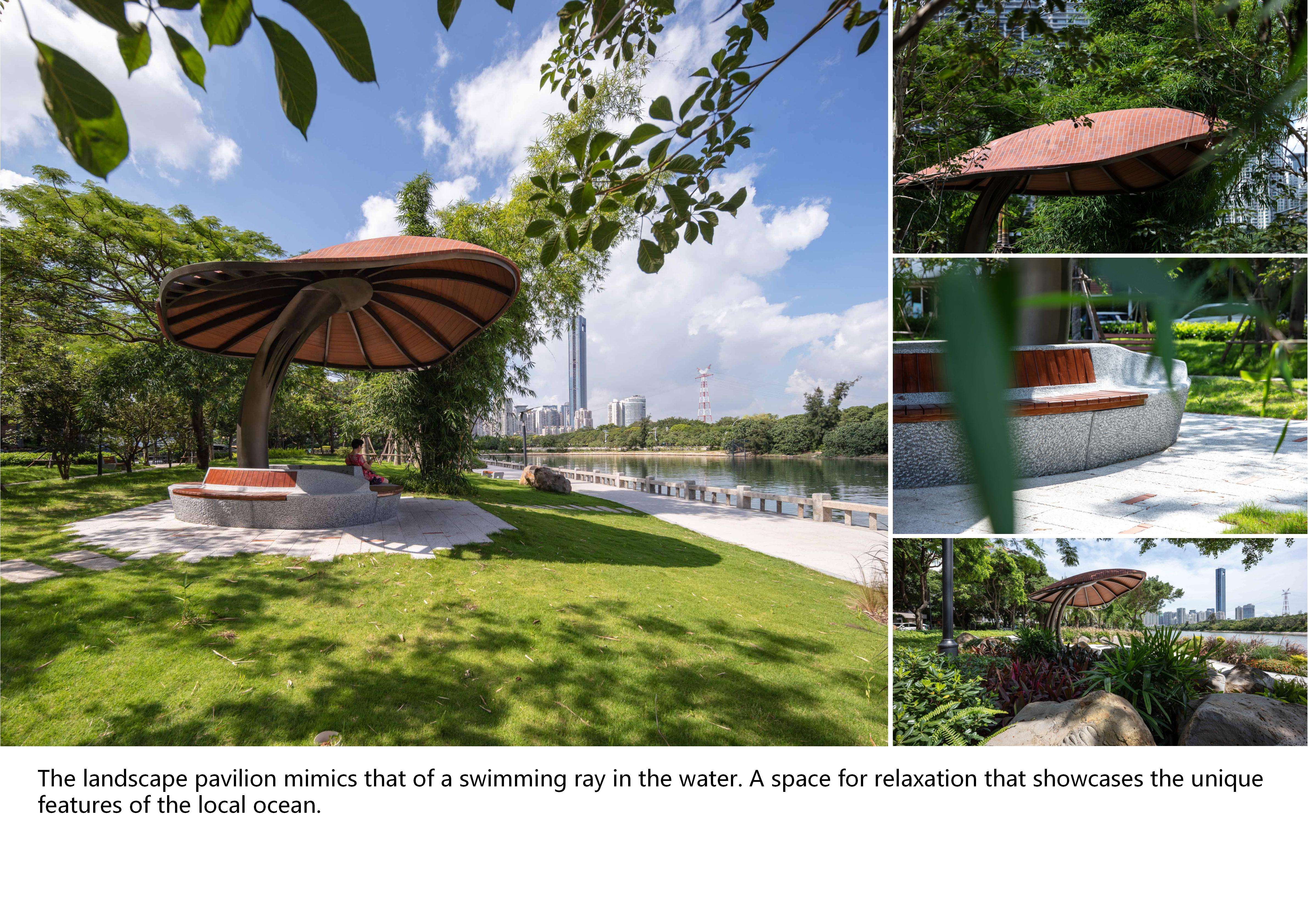
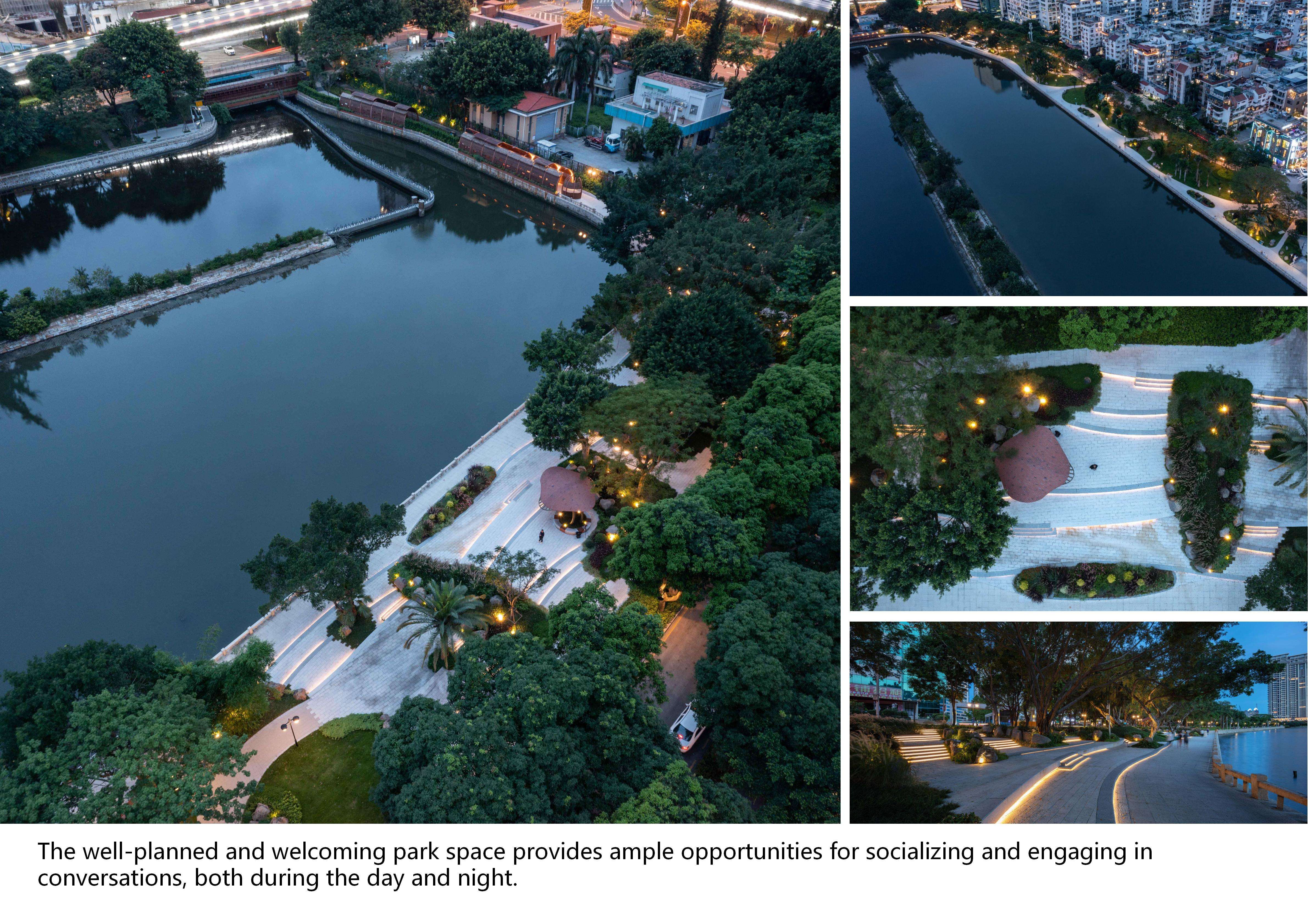


Newprojecte_rosa_barba
Tideline
Tideline
Overview
Tideline, a redevelopment project situated in Xiamen's central residential area, also known as Egret Island, aimed to create a park that caters to both humans and egrets' lifestyles, while prioritizing sustainability, ecology, and animal protection. By increasing the tidal prism by 50%, we have improved the ecosystem, resulting in clearer water in Yundang Lake. Our design not only takes inspiration from land art techniques but also integrates the historical features of the site, resulting in a welcoming and expansive space for locals to gather and connect in the post-pandemic era. Tideline has emerged as a favored destination for those seeking to reconnect with nature and their community, with park visitors enjoying a range of amenities and activities that enhance their experience.
The project is located at the sea water inlet and outlet on the west of Yundang Lake, near the residential area, and adjacent to egret's habitat. The tidal inlet brings in many fish and egrets, creating a unique scene. However, the tidal prism is insufficient, which affects the water system's cleanliness.
Original condition:The park needed more space for social activities, and the landscaping was disorganized with mainly trees. The bird-watching area needed design features. The entrance and exit had poor accessibility due to damaged railings and bamboo bushes.
The visions were to create a framework for activities, a sustainable ecosystem, a public space for residents, ecological awareness, and showcase the city's urban transformation history.
To address the issues, the park preserved the ancient banyan trees and ecosystem and constructed a bird-observation corridor with peepholes. The design for the Tideline was influenced by the area's history and ecosystem when it was once part of the sea before the 1980s. The design incorporated tidal elements like traces, reefs, and waves to reflect the natural evolution. The Tideline consists of three sections: Bird-Observation Corridor, Tide Square, and Lakeside Landscape Area.
The Bird-Observation Corridor design was inspired by the experience of walking in natural surroundings like mountains and rivers. It aims to provide a space where egrets can live in their natural form while enveloping humans. The design allows people to observe egrets' dynamics from a distance while being unable to touch them. The corridor is constructed with timber-textured bamboo, an environmentally friendly material, indicating the association between humans and wildlife’s respective space. The bird-watching "peepholes" on one side of the promenade facing the lake come in different heights, shapes, and positions to accommodate different viewers and photographers.Tree-stump structures were created on the diversion dike, where the egrets can perch and rest. This creates a space where humans and egrets can meet and interact.
Tide Square is a wavy multi-functional public space that showcases the historical geographical characteristics of the site. The "tidal traces" and "reefs" were designed based on the local terrain, creating a well-arranged, multifunctional space for activities. As known to all, Fujian is a hometown of stone sculptures in the world. This area also features an outdoor art museum of stone sculptures, formed by five collections of sculptures using over 100 pieces of Southern Fujian volcanic stones. The sculptures are carefully curated and displayed to highlight their unique beauty and craftsmanship, exhibiting the Southern Fujian ocean culture.The five collections of sculptures are composed of: 1. Fishing activities; 2. Lights of fishing boats on the Yundang Lake; 3. Various protected birds on the Egret Island; 4. Pictures showing the growth of egrets; 5. Fossils of fishes and other marine organisms. In combination with the Lakeside Landscape Area, this museum forms an ecological art space that celebrates both art and nature, while educating visitors about the importance of preserving natural habitats and our impact on the environment.The landscape pavilion for sheltering from the sun and rain takes on the shape of a ray swimming in the water, which offers a space for resting and highlights the regional characteristics of the ocean. Inspired by an opened bird cage, the “bird pavilion” at the northwest entrance features four doors in the four directions of east, west, north and south respectively. At the top, two “magpies” made of bronze open the bamboo chips of the cage and talk to each other, which is a scene of ease and freedom. At the bottom are seats in the shape of a bird’s nest and the floor paved with the square tiles of southern Fujian, implying that the home of birds and human beings are integrated and co-exist in nature.
In May 2022, Tideline was unveiled to the public, and upon its completion, it increased the tidal prism by 50%. This resulted in clearer water, more fish to Yundang Lake, and providing a better habitat for egrets to nest. Local residents and scholars warmly received Tideline, as it improved both the social space and ecosystem. The open park space allows for more public interactions and exchanges to take place freely.
